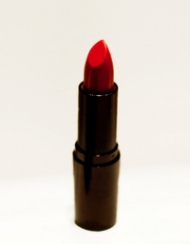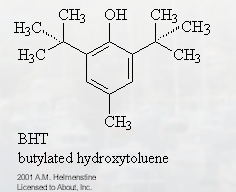Nobody wants to eat rotten or spoiled food, but do you really want to eat “fresh” food with potentially detrimental preservation additives? BHA (butylated hydroxyanisole) and BHT (butylated hydroxytoluene) are widely used by the food industry as preservatives, mainly to prevent oils in foods from oxidizing and becoming rancid. Oxidation affects the flavor, color, and odor of foods and reduces some nutrients. BHA and BHT may have some antimicrobial properties, too. BHA and BHT are also antioxidants. In addition to preserving foods, BHA and BHT are also used to preserve fats and oils in cosmetics and pharmaceuticals.
The surprising part is this, did you know BHA is found in butter, meats, cereals, chewing gum, baked goods, snack foods, dehydrated potatoes, beer, animal feed, food packaging, lipsticks, moisturizers, rubber products, and petroleum products? The FDA categorizes these food additives as GRAS (generally recognized as safe), which means they are widely considered safe for their intended use in specified amounts, but did not have to undergo pre-market review. A subsequent review by an independent committee supported their general safety, but concluded that “uncertainties exist, requiring that additional studies be conducted.” Other health organizations have raised concerns. Based on animal studies, the National Toxicology Program has concluded that BHA “is reasonably anticipated to be a human carcinogen,” while BHT has been linked to an increased—or sometimes decreased—risk of cancer in animals. The consumer group the Center for Science in the Public Interest thus cites BHA as an additive to “avoid” and puts BHT in its “caution” column. Click here to read more about the potential health effects of BHA and BHT
BHA and BHT also may have positive effects in addition to its detrimental ones. Some lab and animal studies have found that BHA and BHT—at high levels as well as at lower levels found in foods—may have anti-cancer properties, possibly through the scavenging of damaging free radicals or by stimulating production of enzymes that detoxify carcinogens. Other research suggests that low doses of BHA are toxic to cells, while high doses are protective—or the reverse, that low doses are okay, but high doses are harmful. In other words, no one really knows how BHA and BHT act in the human body.
So before you freak out and stop eating all the foods with BHA and BHT in it, realize that this research has been conducted on animals and in test tubes: not humans. There is no proof that BHA and BHT is bad, but there is no proof it is beneficial either. However, a way to avoid BHA and BHT in most foods is to eat more fresh and minimally processed foods, which contain few or no additives. You can also look for packaged foods that use other preservatives, such as vitamin E, or have no preservatives at all.



